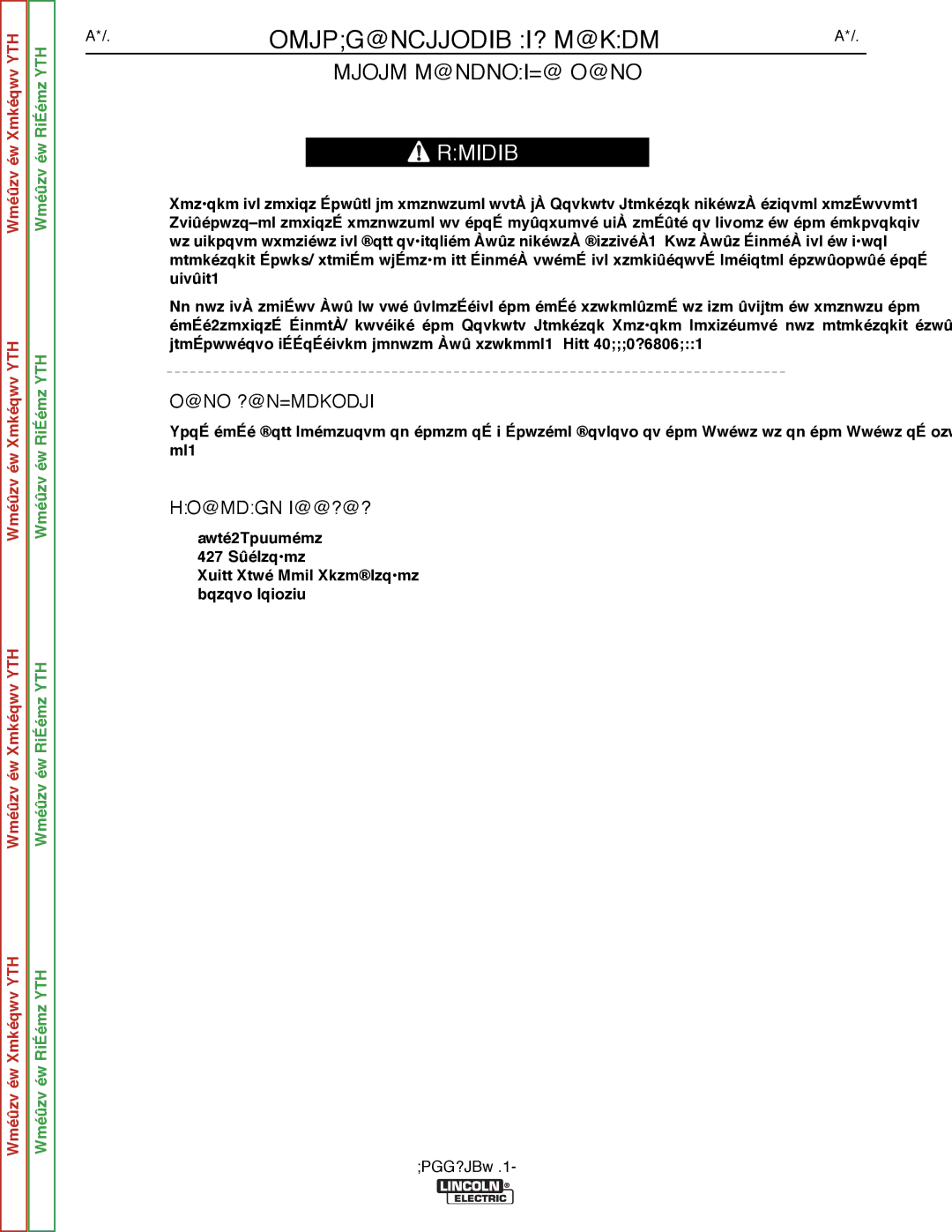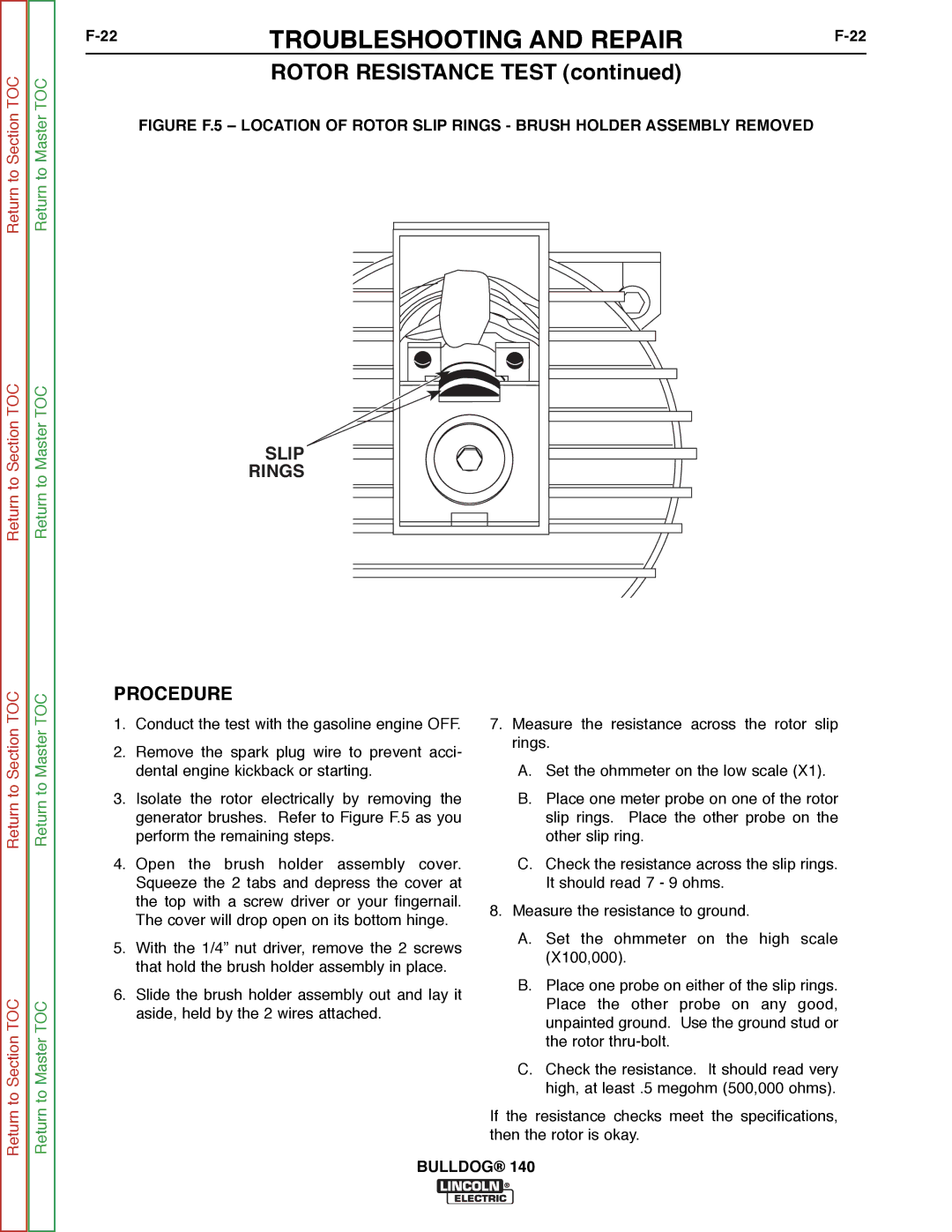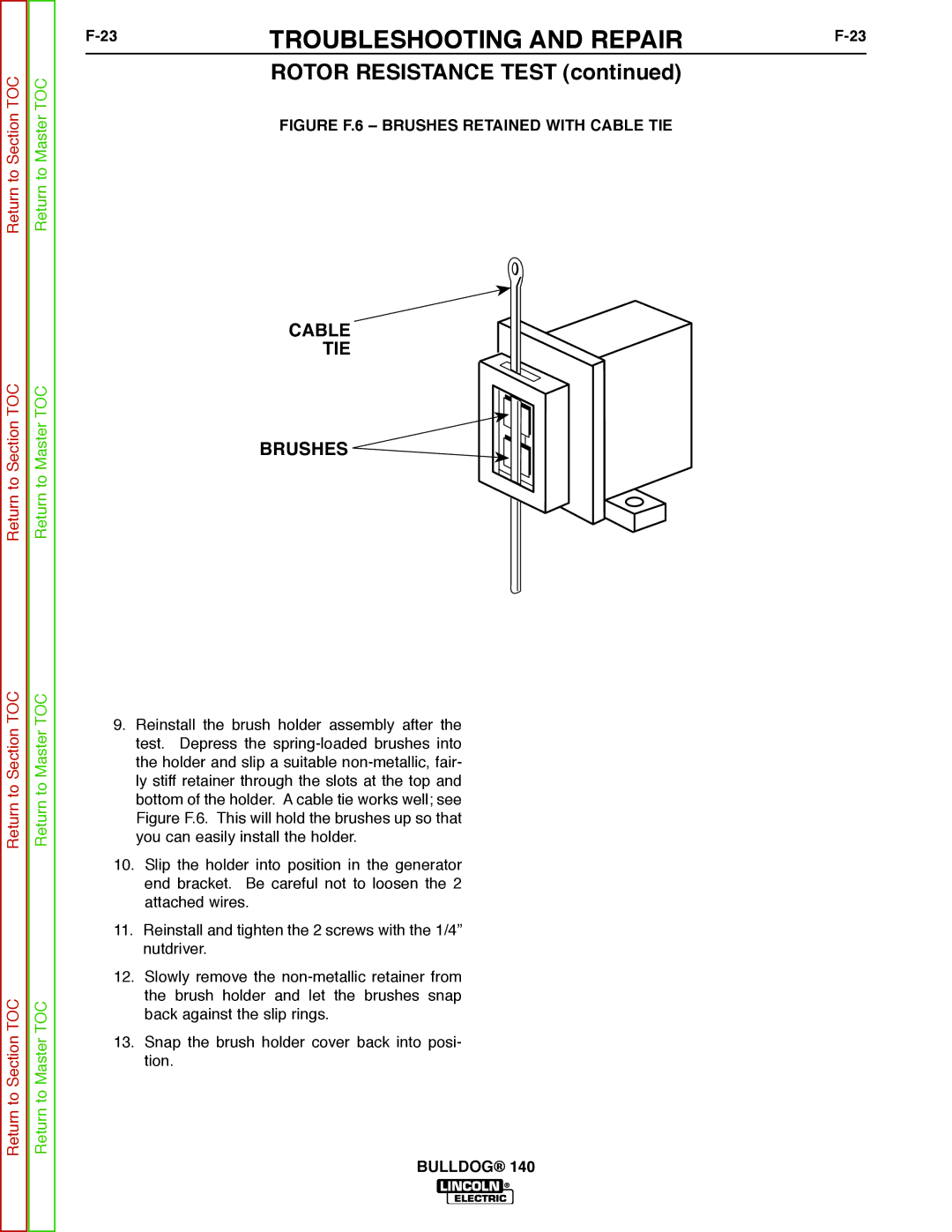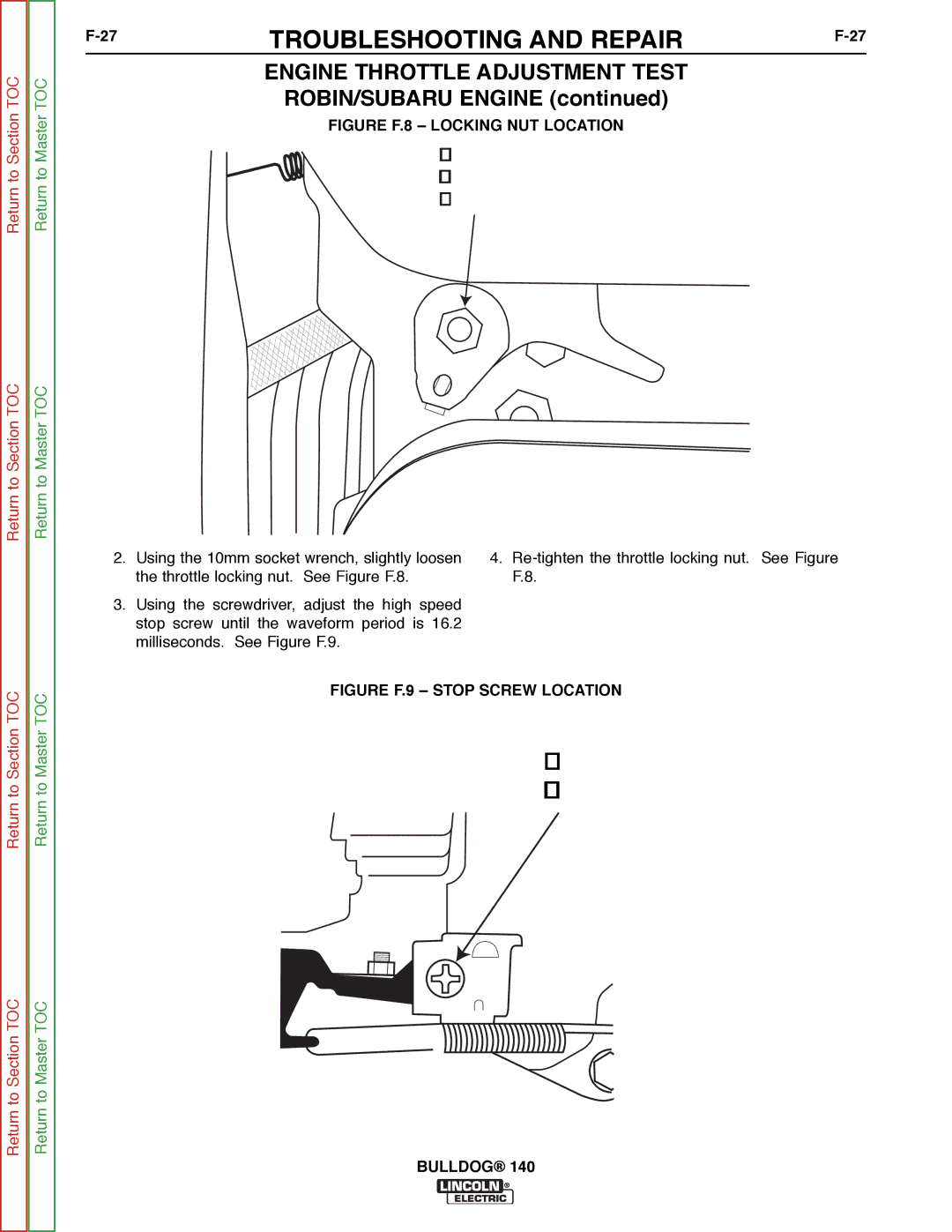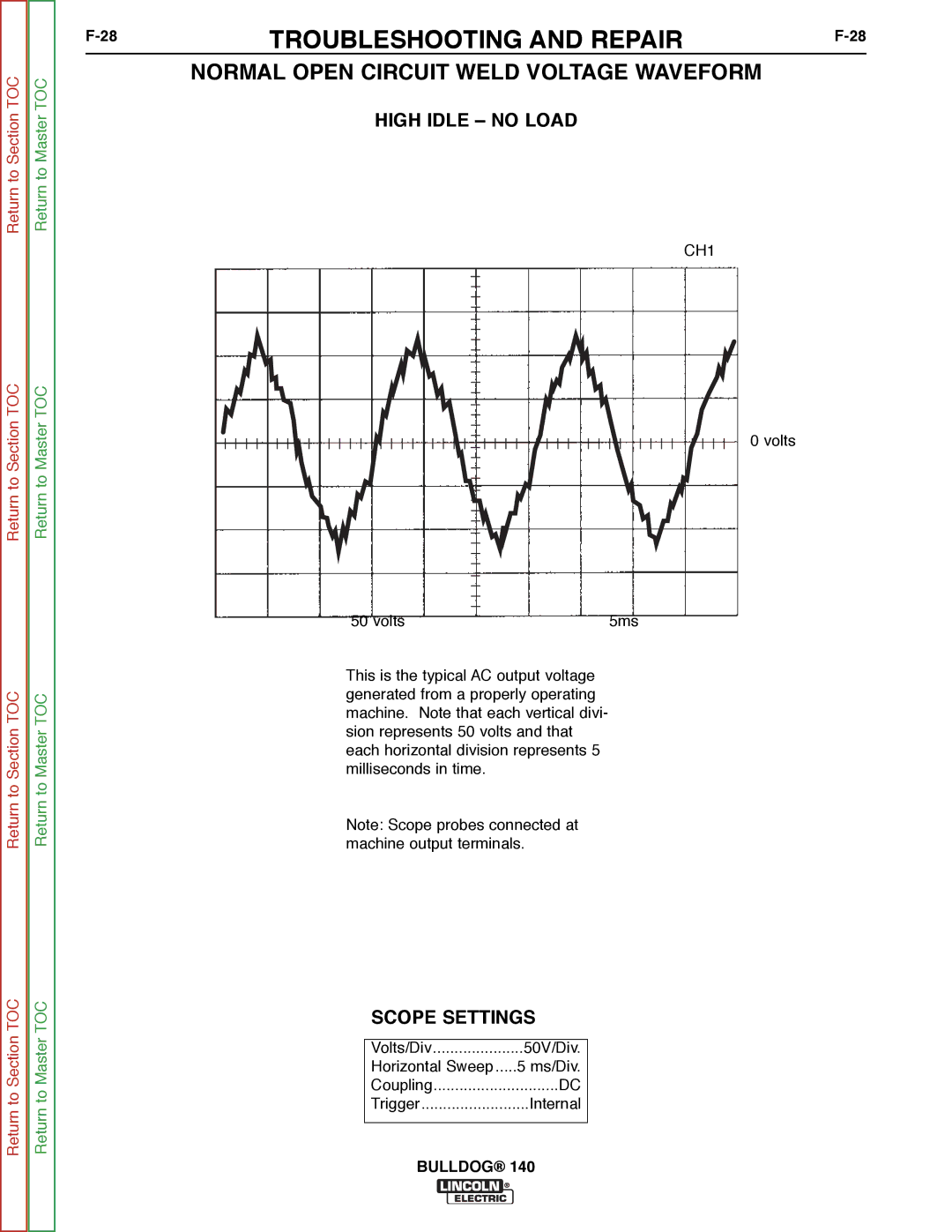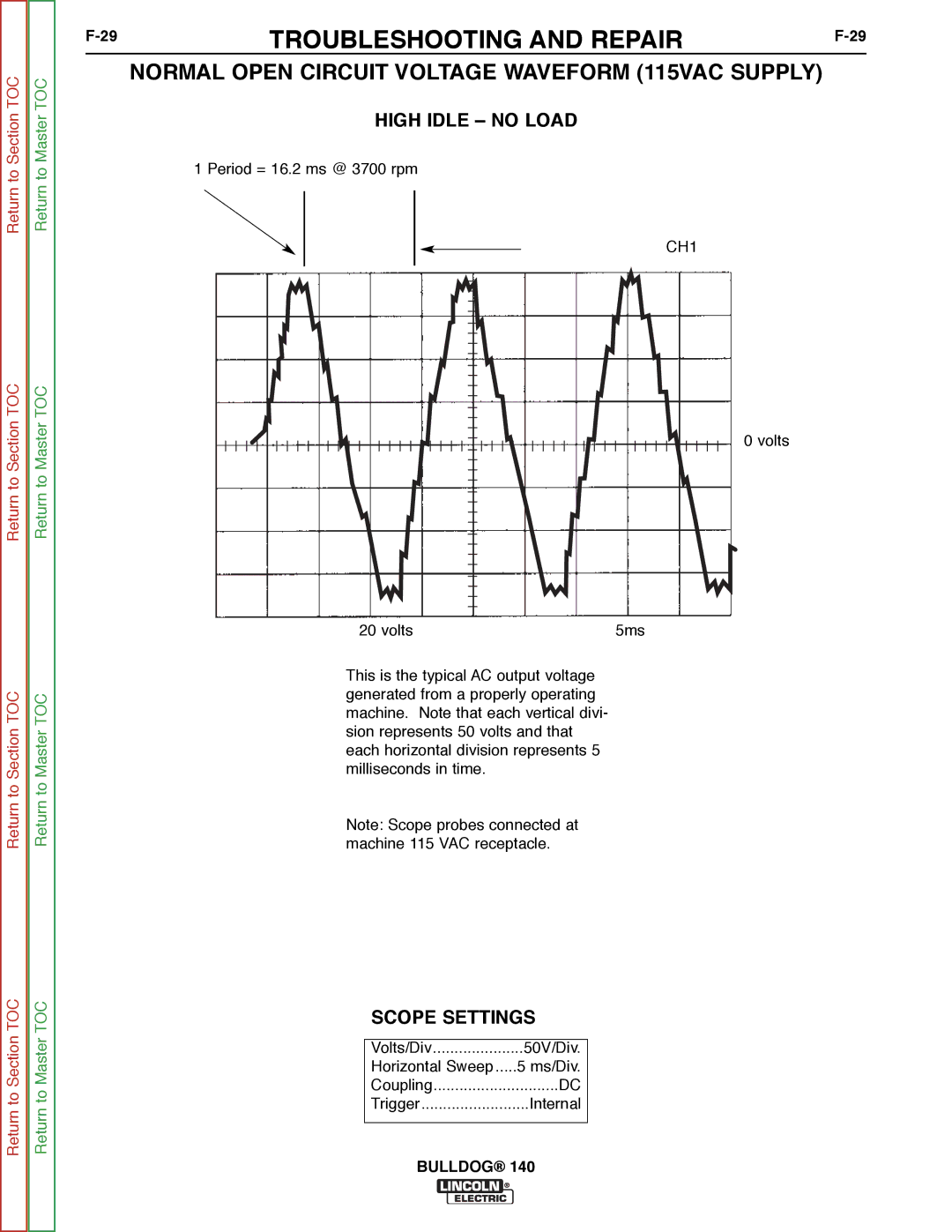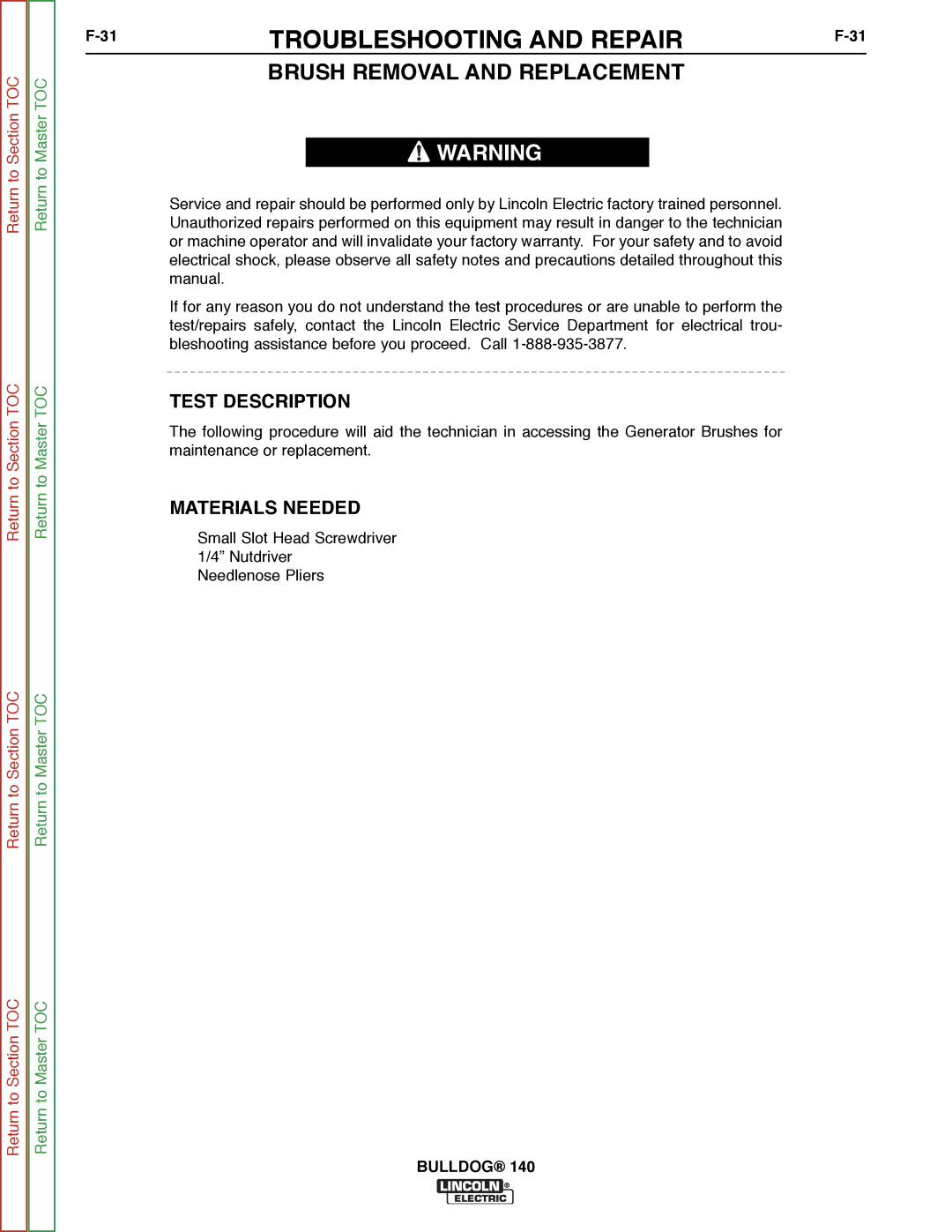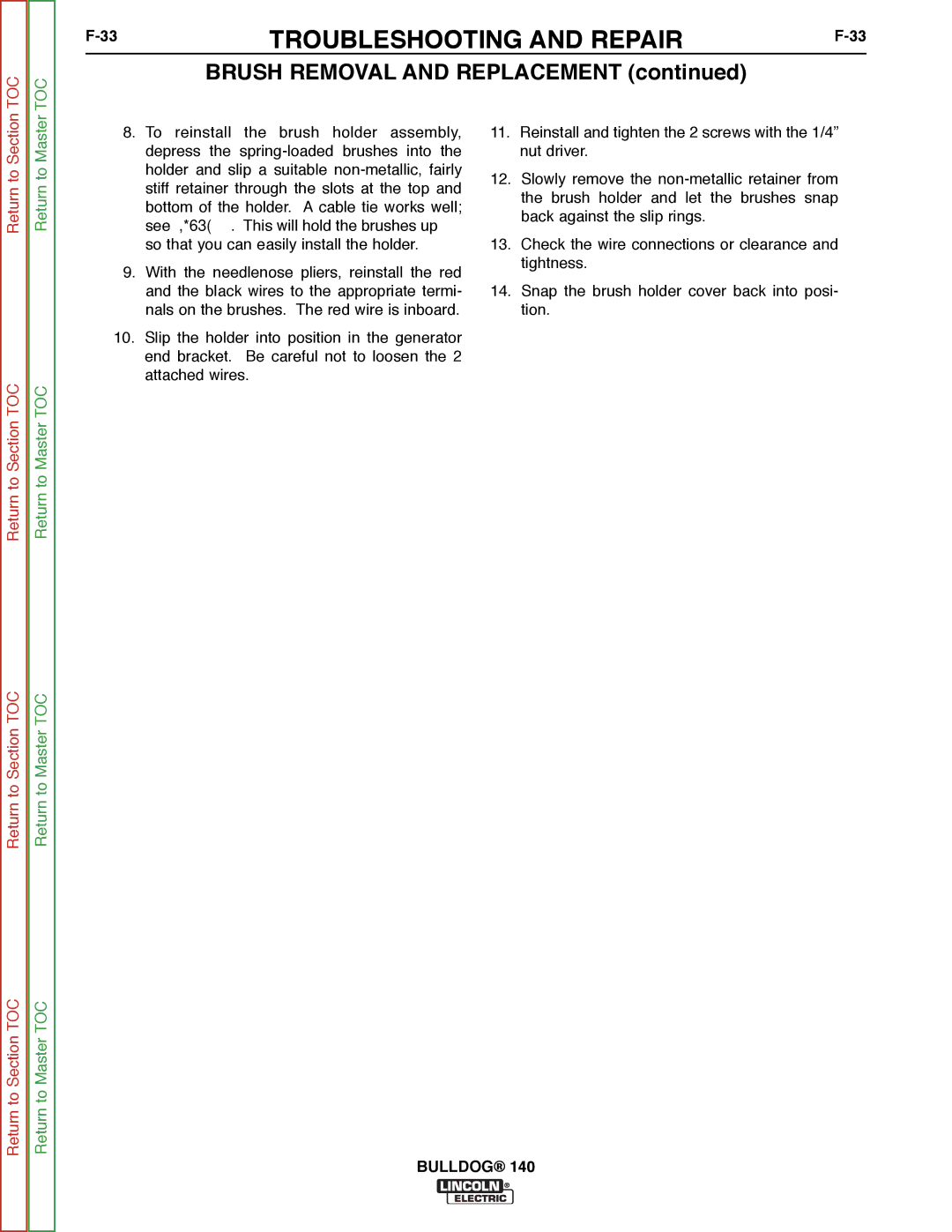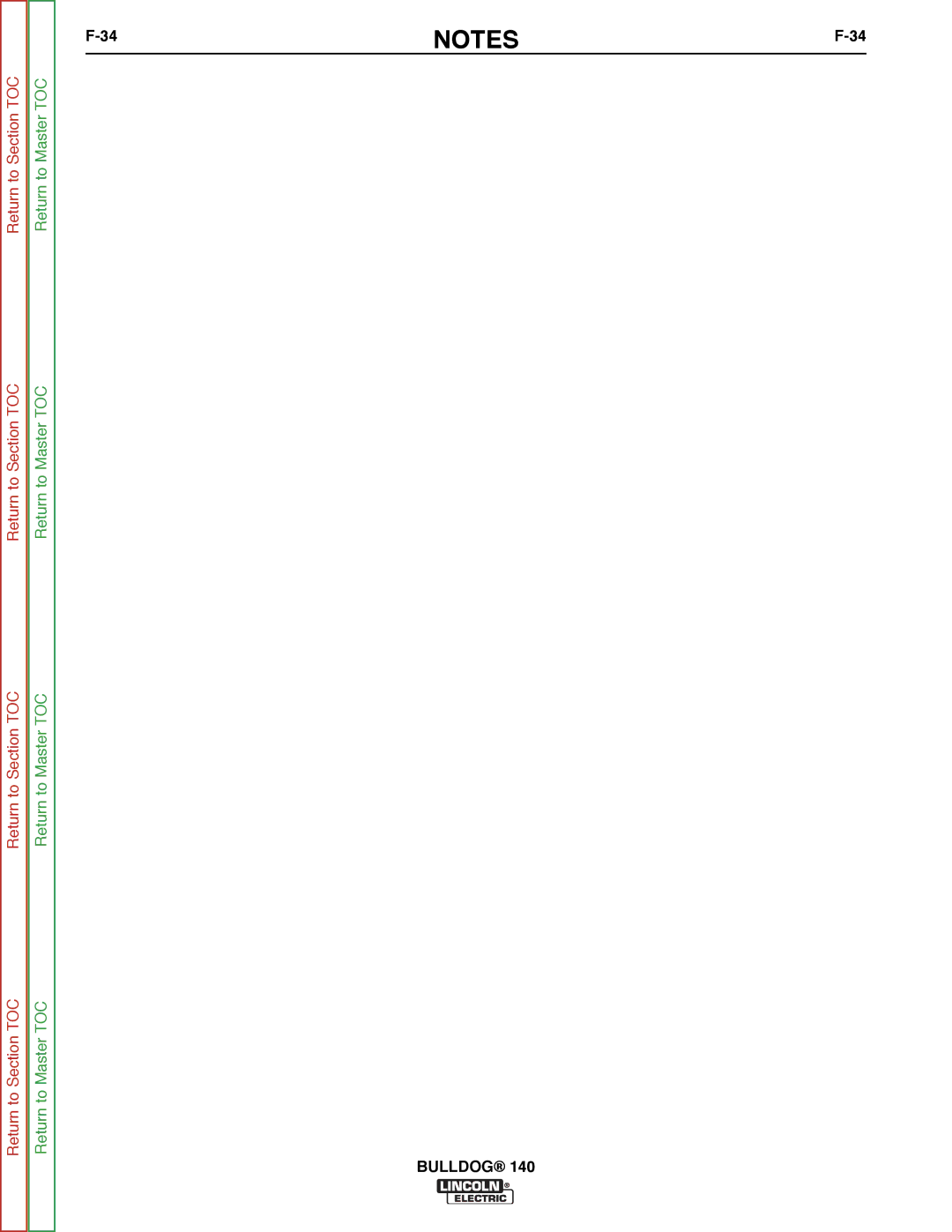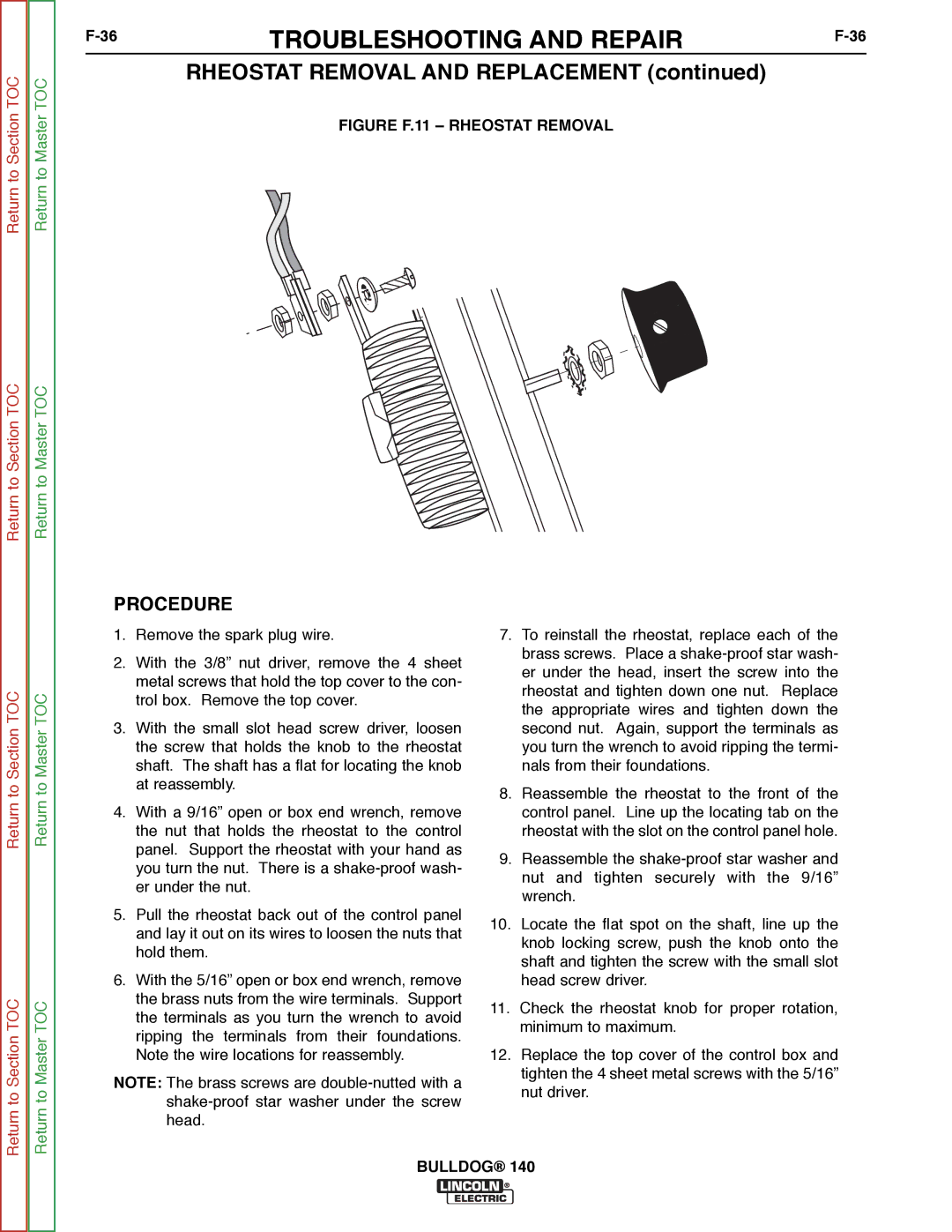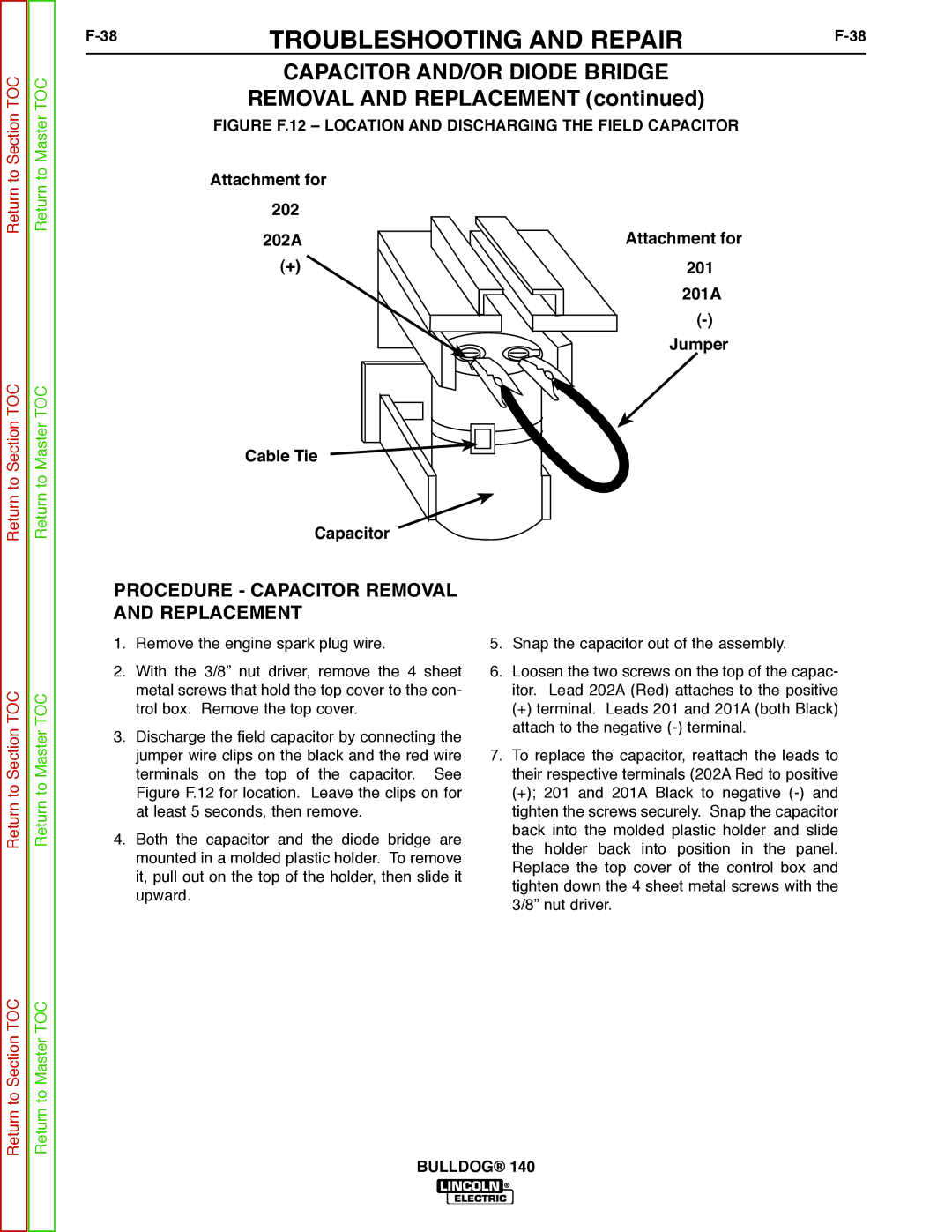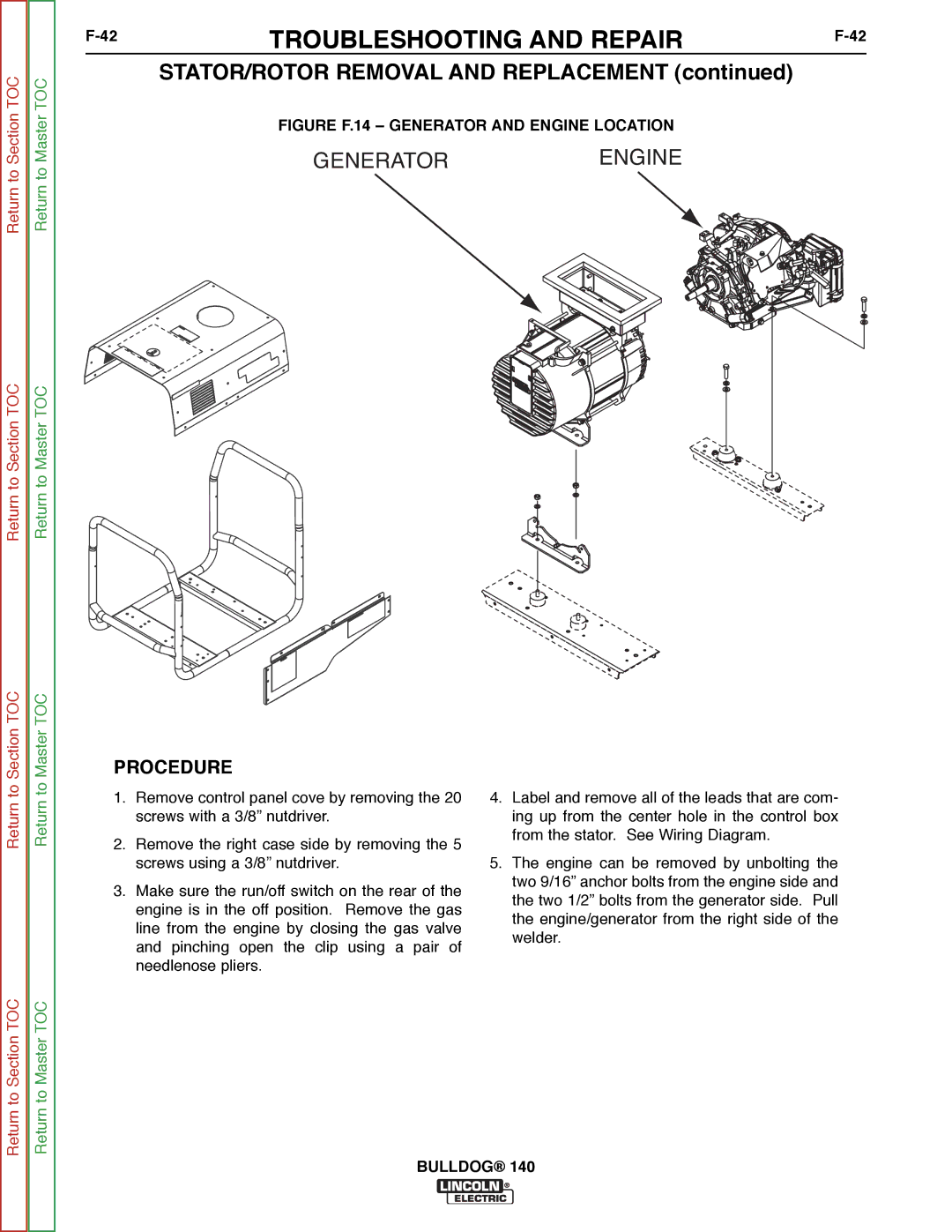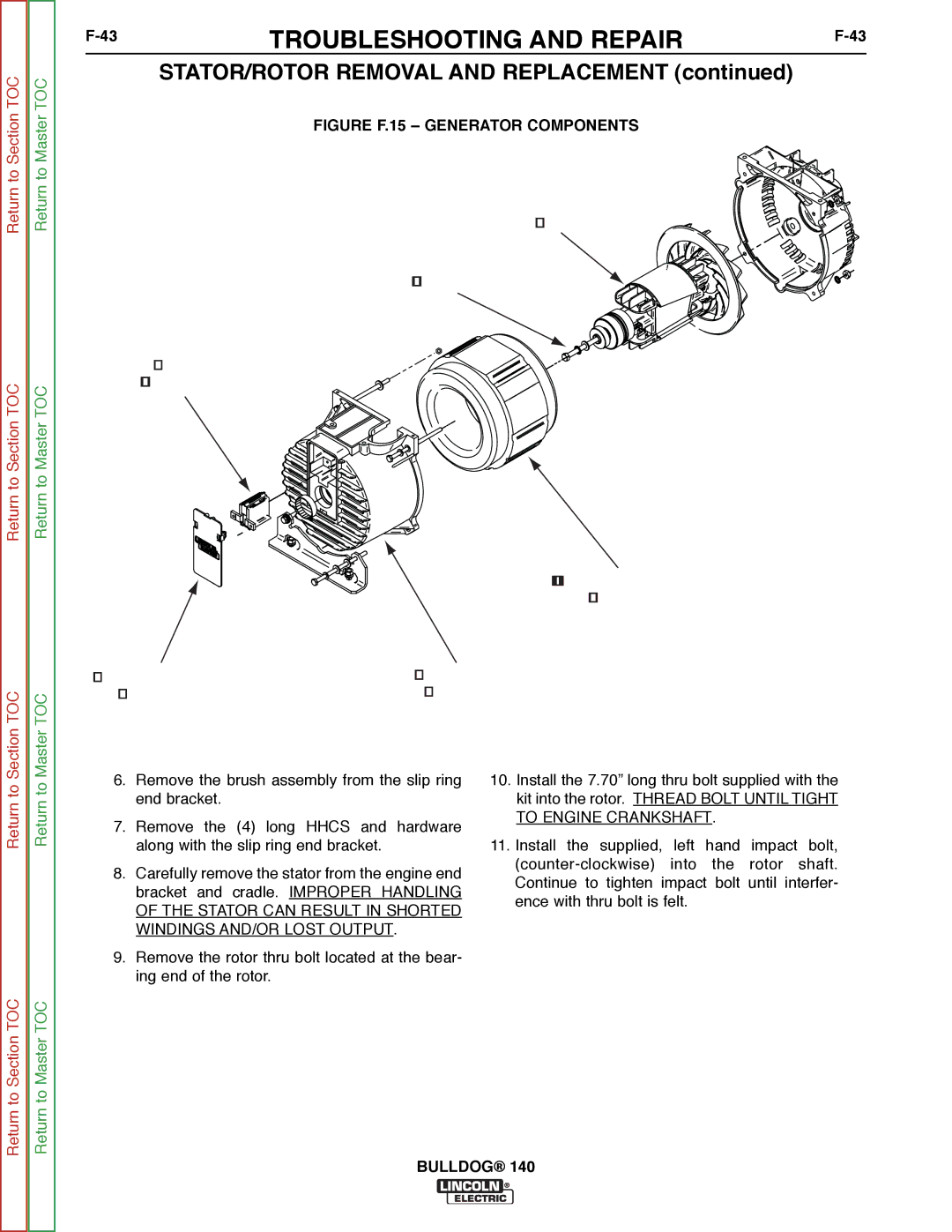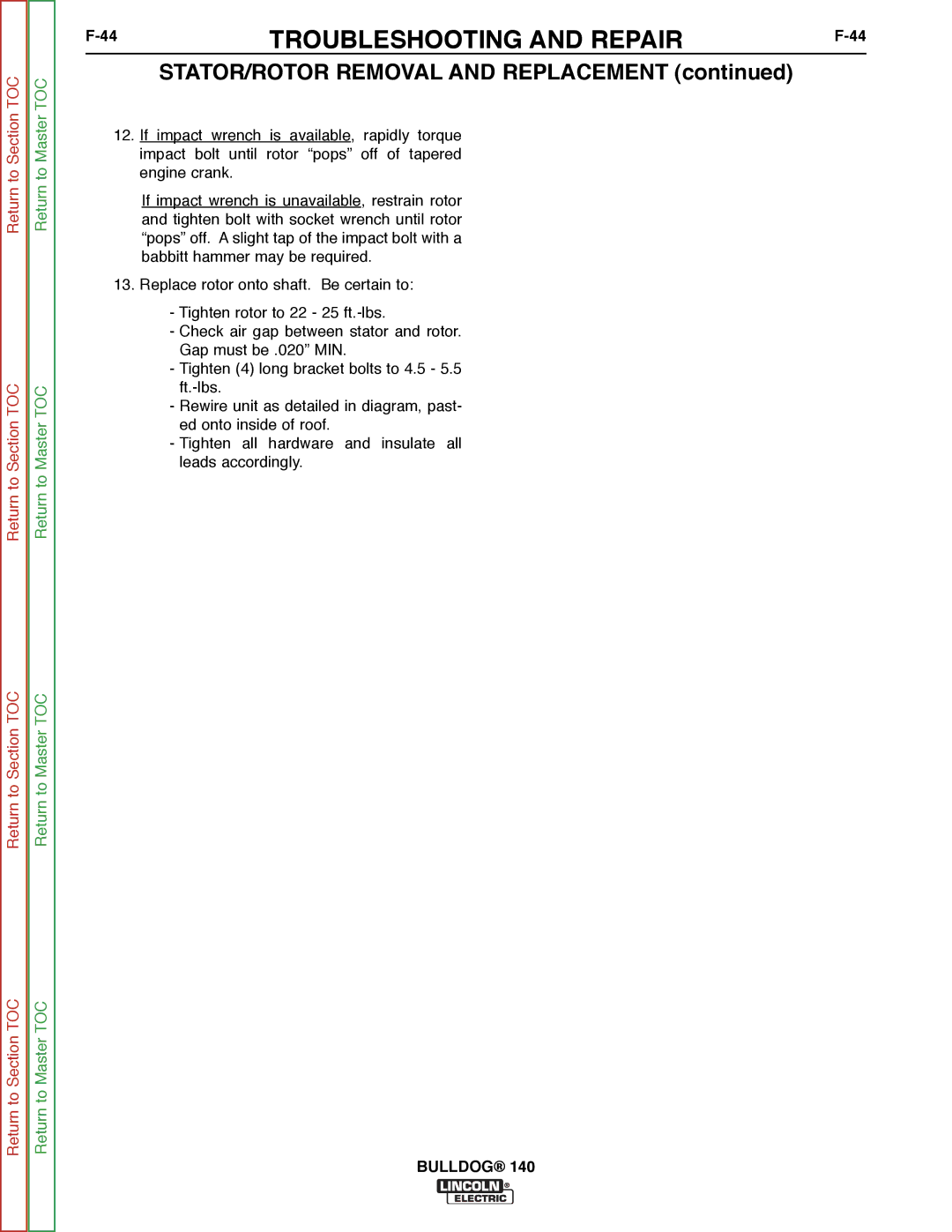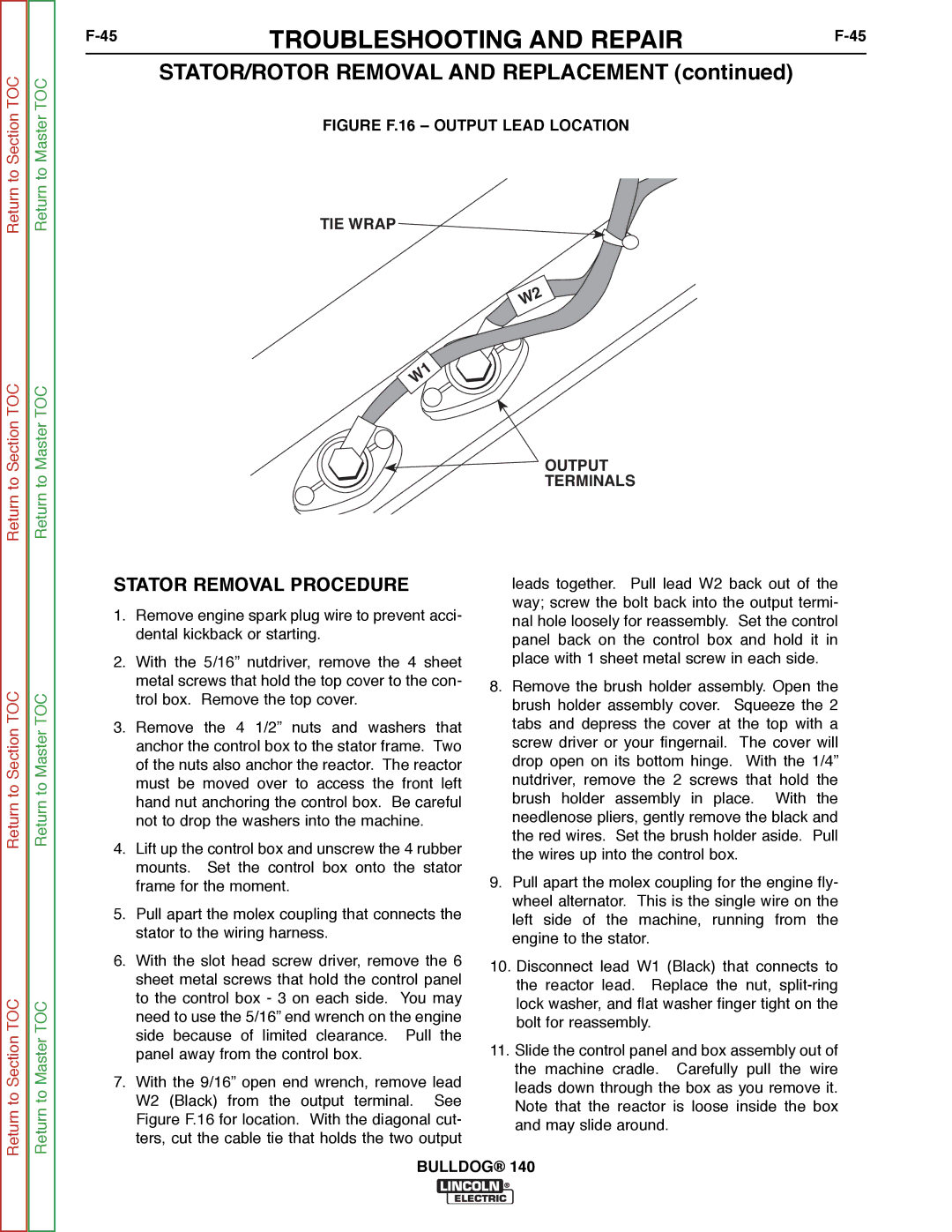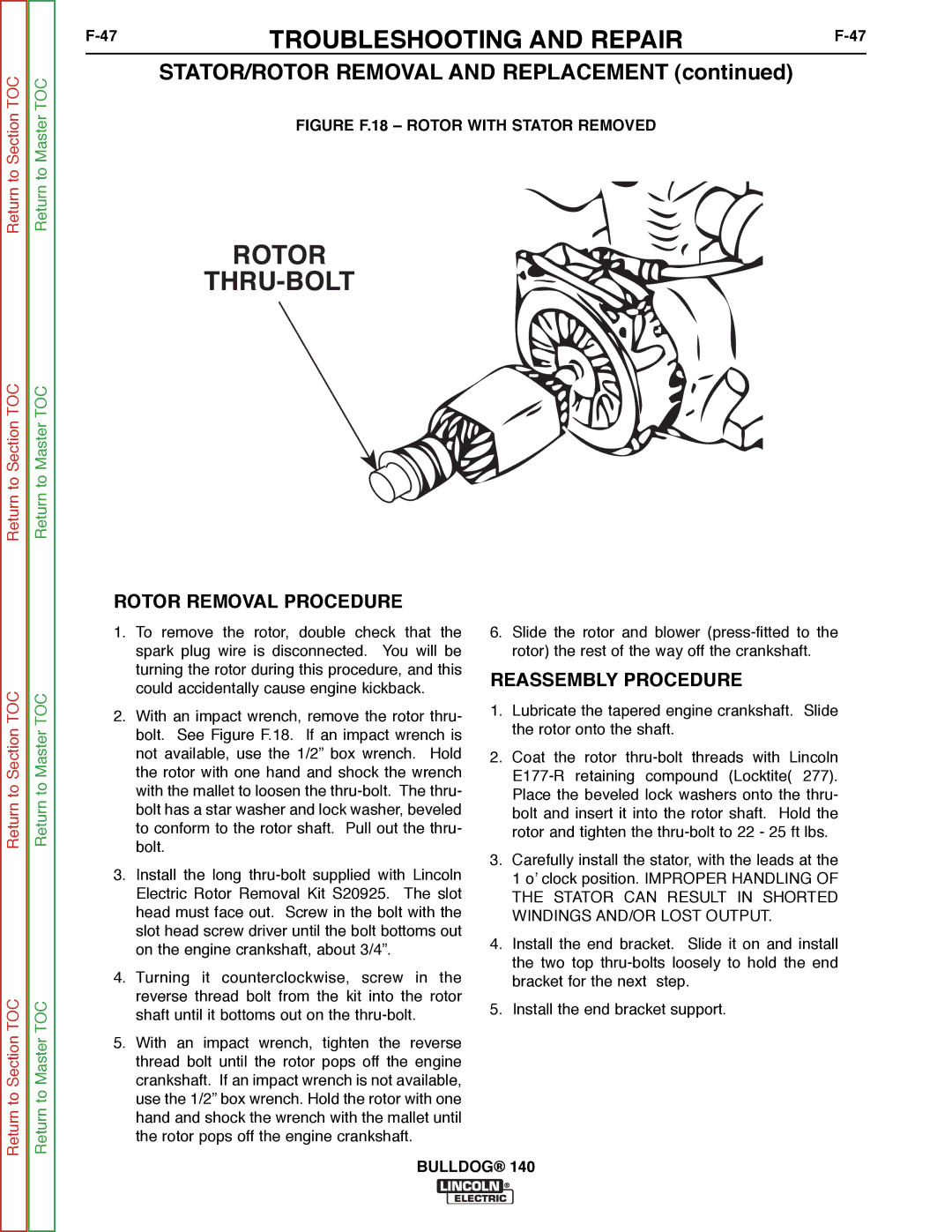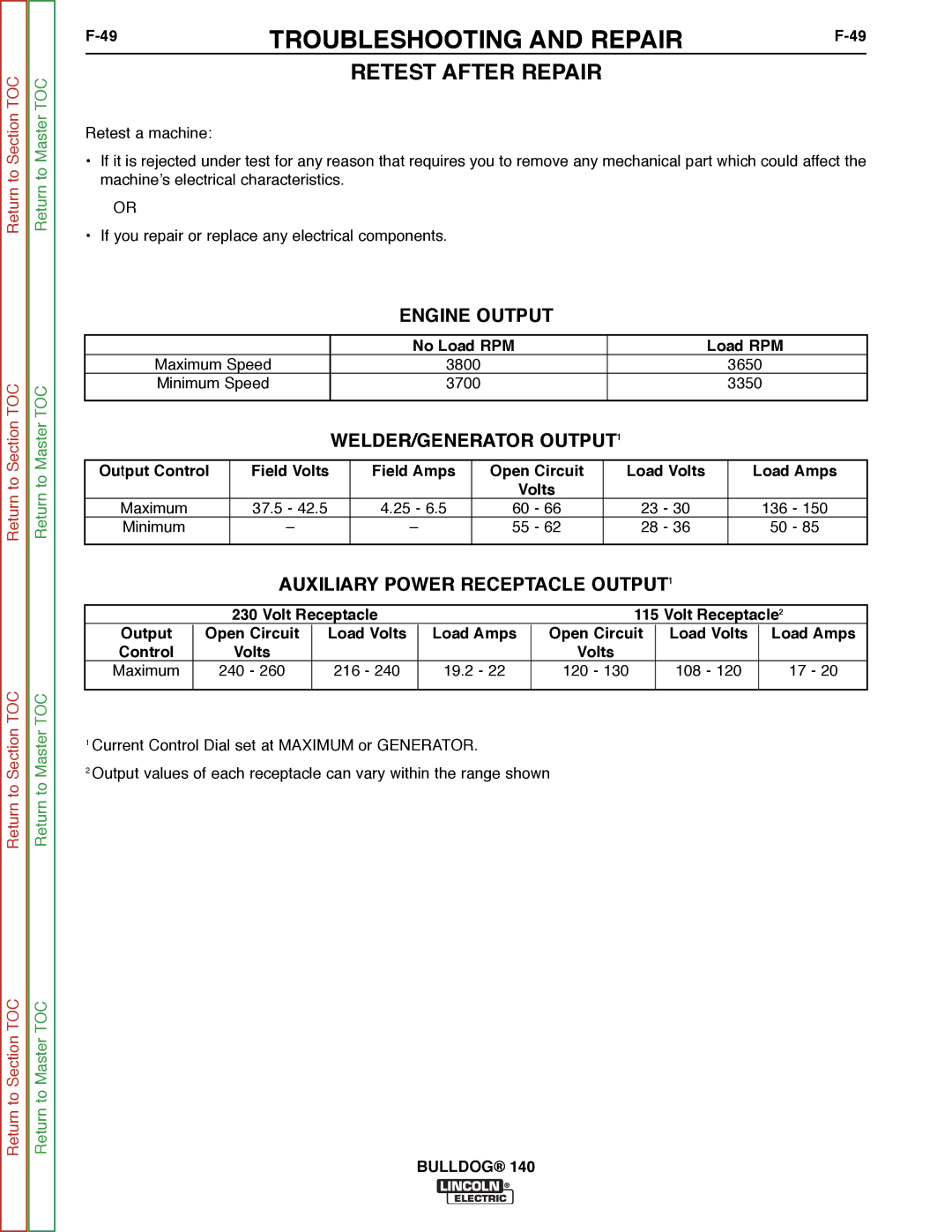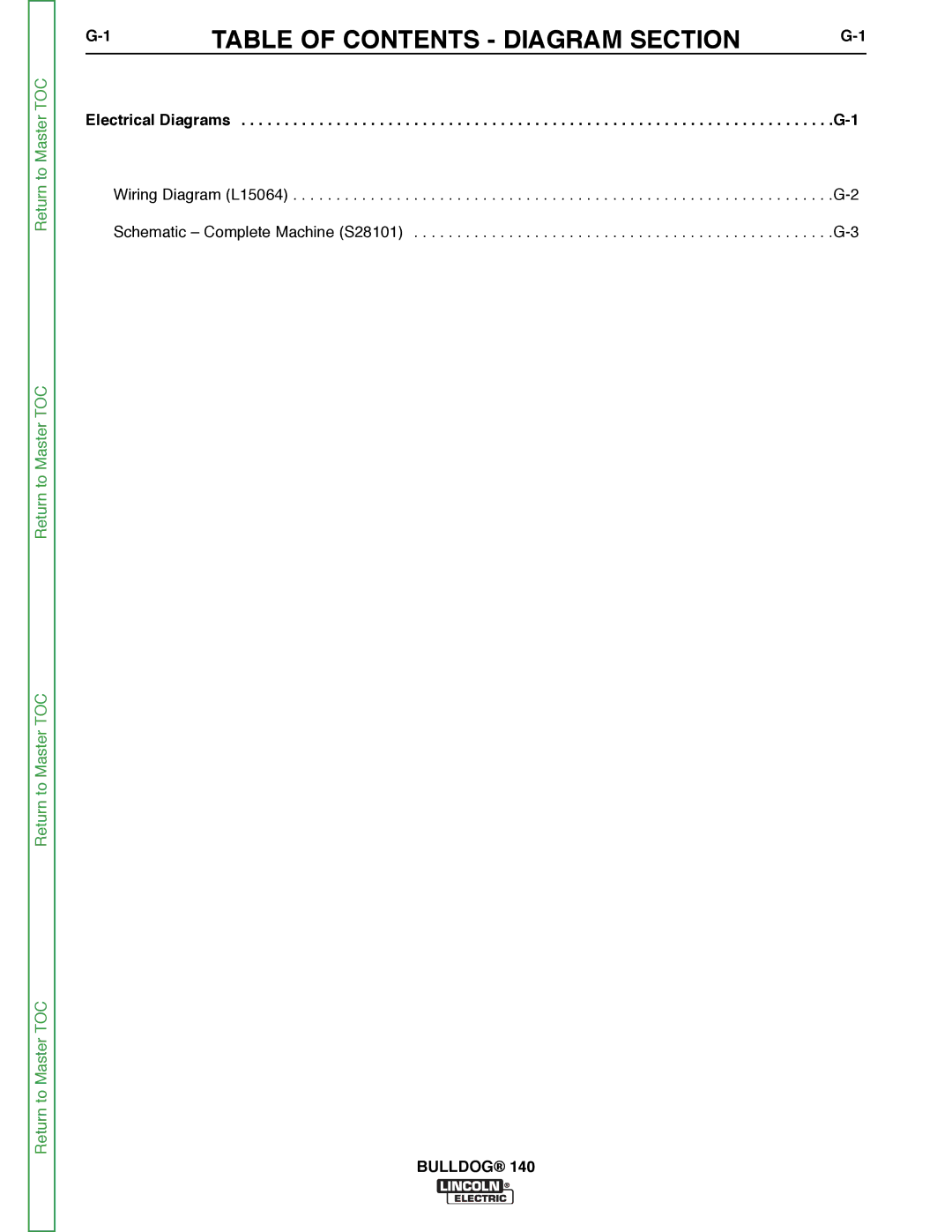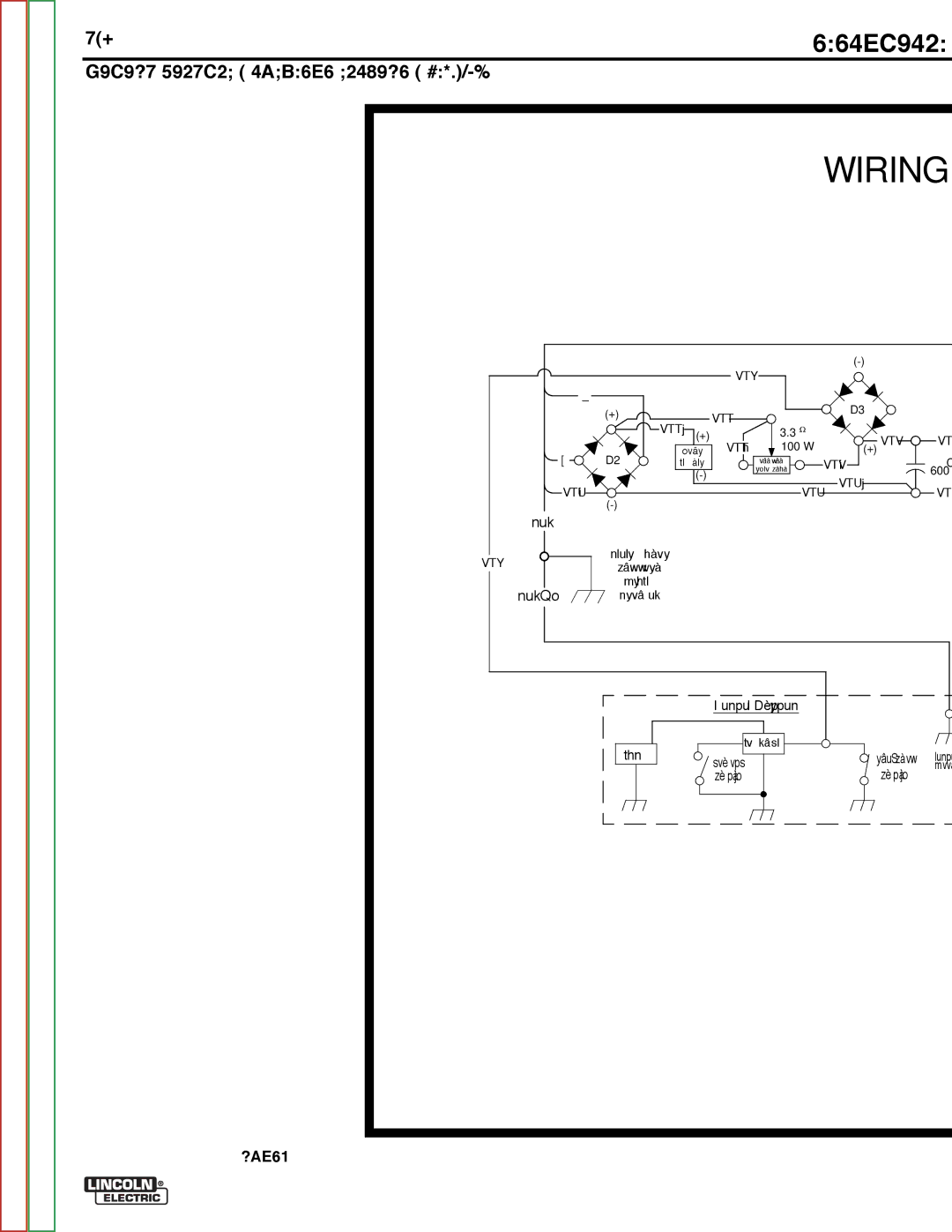
TOC
TOC
TROUBLESHOOTING AND REPAIR | ||
|
BRUSH REMOVAL AND REPLACEMENT (continued)
Return to Master
Return to Master TOC
Return to Master TOC
Return to Master TOC
8.To reinstall the brush holder assembly, depress the
9.With the needlenose pliers, reinstall the red and the black wires to the appropriate termi- nals on the brushes. The red wire is inboard.
10.Slip the holder into position in the generator end bracket. Be careful not to loosen the 2 attached wires.
11.Reinstall and tighten the 2 screws with the 1/4” nut driver.
12.Slowly remove the
13.Check the wire connections or clearance and tightness.
14.Snap the brush holder cover back into posi- tion.
